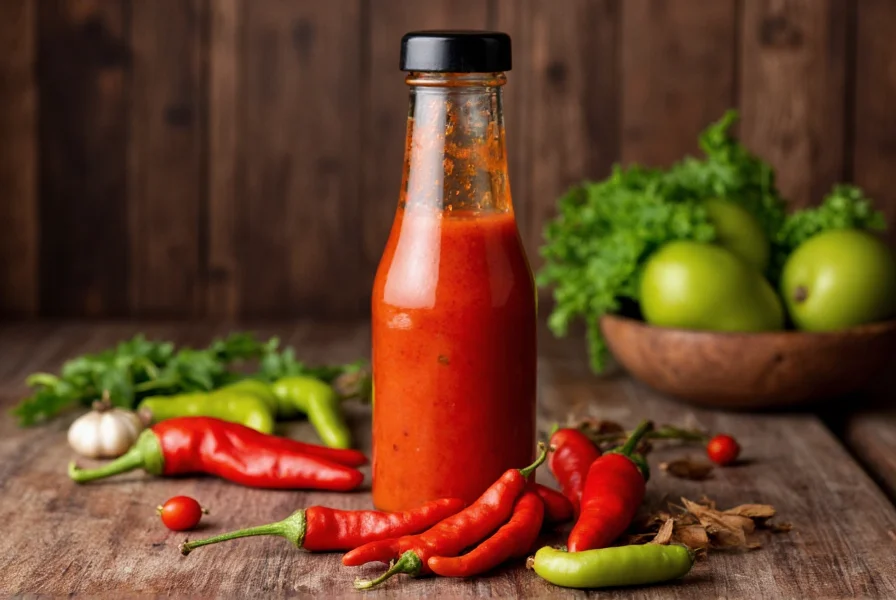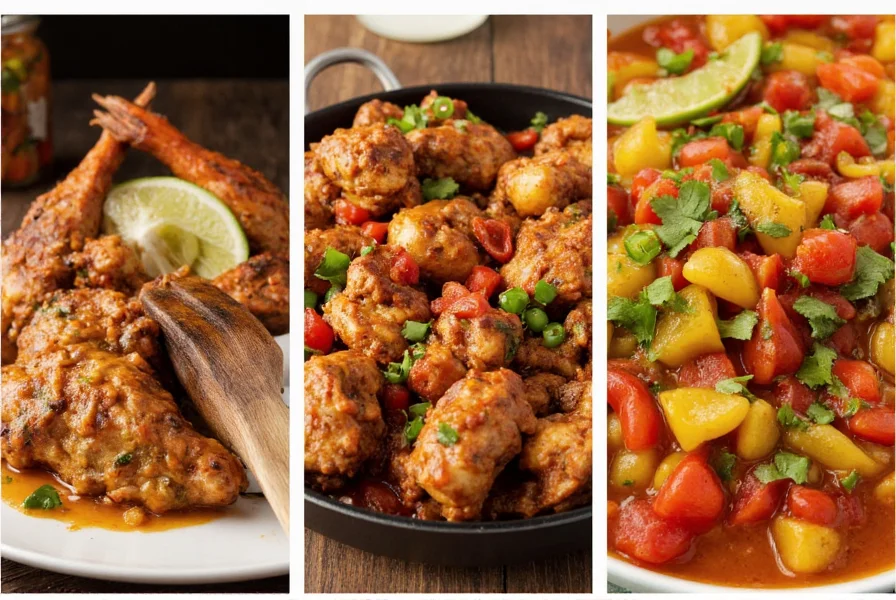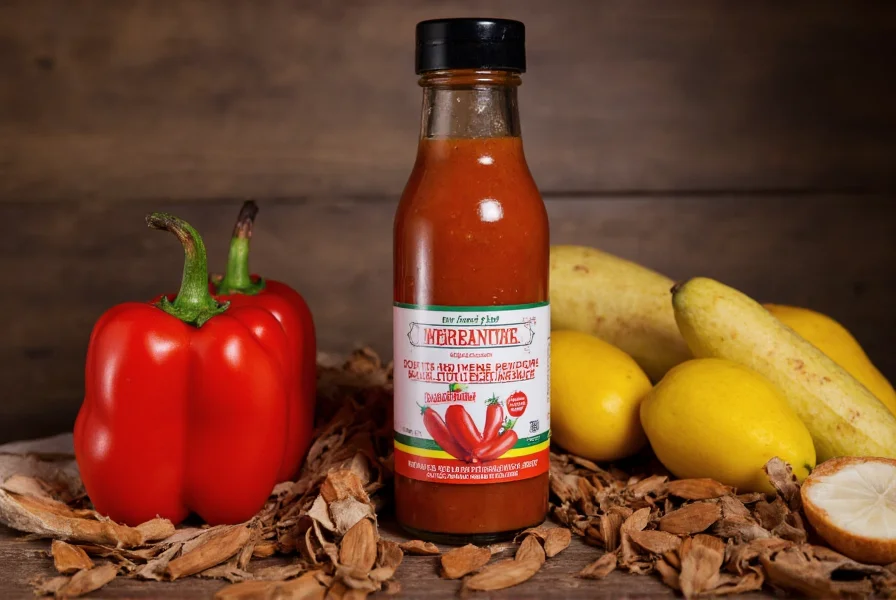Understanding scotch bonnet pepper sauce begins with recognizing its cultural significance and unique properties. Unlike generic hot sauces, authentic scotch bonnet preparations showcase the pepper's complex flavor profile that extends far beyond mere heat. Caribbean chefs prize these peppers for their floral, fruity undertones that transform ordinary dishes into extraordinary culinary experiences.
The Scotch Bonnet Pepper: Nature's Fiery Gem
Native to the Caribbean and West Africa, scotch bonnet peppers (Capsicum chinense) earn their name from their distinctive bonnet-like shape. These wrinkled, lantern-shaped peppers mature from green to vibrant red, orange, or yellow. Their heat level sits firmly in the superhot category, registering 100,000–350,000 Scoville Heat Units (SHU)—nearly 40 times hotter than a jalapeño. What separates scotch bonnets from similar peppers like habaneros is their pronounced tropical fruit flavor with notes of apricot, apple, and citrus.
| Pepper Variety | Scoville Range | Distinct Flavor Notes |
|---|---|---|
| Scotch Bonnet | 100,000–350,000 SHU | Tropical fruit, citrus, floral |
| Habanero | 100,000–350,000 SHU | Smoky, earthy, slightly sweeter |
| Ghost Pepper | 855,000–1,041,427 SHU | Initial sweetness, then intense burn |
Creating Authentic Scotch Bonnet Pepper Sauce
Traditional scotch bonnet pepper sauce recipes balance intense heat with complementary flavors. A basic preparation involves blending 10–15 peppers with 1 cup vinegar, 3 minced garlic cloves, 1 sliced onion, 1 tablespoon ginger, and salt. Many Caribbean variations add thyme, allspice, or mango for complexity. When making scotch bonnet pepper sauce at home, always wear gloves during preparation and avoid touching your face.

Safety Considerations for Handling Superhot Peppers
The capsaicin in scotch bonnets can cause severe skin irritation and respiratory discomfort. Professional chefs recommend these safety protocols:
- Always wear nitrile gloves (latex won't protect)
- Work in well-ventilated areas or outdoors
- Avoid touching eyes or face during preparation
- Use separate cutting boards for hot peppers
- Wash all tools with soapy water immediately after use
If you experience skin irritation, apply milk or yogurt to neutralize the capsaicin. For severe reactions, seek medical attention promptly. Understanding how hot is scotch bonnet pepper sauce helps prevent dangerous overuse—start with just a few drops in recipes and adjust to taste.
Culinary Applications Across Global Cuisines
While deeply rooted in Jamaican and Trinidadian cooking, scotch bonnet sauce has gained international popularity. Chefs use it to:
- Enhance jerk marinades and grilled meats
- Add depth to seafood stews and ceviche
- Balance sweetness in tropical fruit salsas
- Elevate Caribbean-style curries
- Create signature hot sauces for wings and tacos
Unlike simpler hot sauces, authentic Caribbean scotch bonnet pepper sauce uses focus on flavor integration rather than just heat. The sauce's fruity notes complement coconut milk-based dishes particularly well, making it indispensable in dishes like Jamaican curry goat.
Homemade vs. Commercial Sauce Comparison
When deciding between making scotch bonnet pepper sauce at home versus purchasing commercial varieties, consider these factors:
| Factor | Homemade Sauce | Commercial Sauce |
|---|---|---|
| Flavor Control | Complete customization | Fixed recipe |
| Heat Level | Adjustable to preference | Consistent but may vary by brand |
| Shelf Life | 2–3 weeks refrigerated | 6–12 months unopened |
| Ingredient Quality | Fresh, known sources | May contain preservatives |
Storage and Preservation Techniques
Proper storage maintains both safety and flavor. Follow these scotch bonnet pepper sauce storage tips:
- Store in glass containers (capsaicin can degrade plastic)
- Keep refrigerated at all times after opening
- Use clean utensils to prevent contamination
- Consume homemade sauce within 3 weeks
- Commercial sauces maintain quality for 6 months after opening
For longer preservation, freeze portions in ice cube trays then transfer to airtight bags. This method preserves flavor for up to 6 months without significant degradation.
Substitution Strategies for Different Needs
When scotch bonnets aren't available, consider these alternatives based on your recipe requirements:
- For heat and similar flavor: Habanero peppers (use 20% less due to slightly different heat distribution)
- For milder heat: Aji chombo peppers or ripe serranos with mango puree
- For non-spicy alternative: Bell pepper and paprika with citrus zest for flavor complexity
Understanding scotch bonnet vs habanero pepper sauce differences helps in substitutions. While similar in heat, habaneros lack the distinctive tropical fruit notes, so adding pineapple or mango can bridge the flavor gap.

Recipe Integration Tips
Master chefs recommend these techniques for incorporating scotch bonnet sauce:
- Add during final cooking stages to preserve volatile flavor compounds
- Balance with acidic ingredients like lime juice to enhance fruit notes
- Pair with creamy elements (coconut milk, avocado) to moderate heat
- Use in marinades for 2–4 hours maximum to prevent protein breakdown
- Create finishing sauces rather than cooking bases for optimal flavor
For those exploring scotch bonnet pepper sauce recipe development, start with a base ratio of 1 pepper per 4 servings, then adjust according to your audience's heat tolerance. Remember that heat perception increases over time—what seems mild initially may become overwhelming after several minutes.
Frequently Asked Questions
How long does homemade scotch bonnet pepper sauce last?
Properly stored in a glass container in the refrigerator, homemade scotch bonnet pepper sauce maintains quality for 2–3 weeks. The vinegar content acts as a preservative, but fresh ingredients eventually degrade. Always check for mold, off odors, or separation before use. For longer storage, freeze in ice cube trays then transfer to airtight containers for up to 6 months.
Can I reduce the heat level of scotch bonnet pepper sauce?
Yes, several methods effectively reduce heat while preserving flavor. Remove seeds and white membranes before blending, as these contain most capsaicin. Add acidic components like lime juice or vinegar, which help neutralize heat perception. Incorporate sweet elements such as mango or honey to balance spiciness. For immediate relief after accidental overuse, dairy products like yogurt or coconut milk provide temporary counteraction due to casein binding with capsaicin.
What makes scotch bonnet pepper sauce different from other hot sauces?
Scotch bonnet pepper sauce stands apart through its distinctive flavor profile—beyond extreme heat, it offers complex tropical fruit notes of apricot, citrus, and apple. Unlike vinegar-forward hot sauces, authentic Caribbean preparations balance heat with aromatic ingredients like thyme, garlic, and allspice. The pepper's unique chemical composition creates a different heat pattern—more front-of-mouth burn with slower building intensity compared to the immediate throat burn of some superhot sauces.
Are there health benefits to scotch bonnet pepper sauce?
Scotch bonnet peppers contain capsaicin, which has documented metabolic benefits including temporary metabolism boost and pain relief properties. They're rich in vitamins A and C, plus antioxidants like beta-carotene. The vinegar base provides additional benefits including blood sugar regulation. However, excessive consumption can irritate digestive systems, so moderation is key. Those with gastrointestinal conditions should consult healthcare providers before regular consumption.











 浙公网安备
33010002000092号
浙公网安备
33010002000092号 浙B2-20120091-4
浙B2-20120091-4